Let's time travel.
From the 19th century to today, here's how Bemidji State fought to exist and how it's flourished on the lakeshore ever since.
May 5, 1896
Bemidji's origins

Bemidji's first settlement came in 1888, and it was incorporated as a village on May 5, 1896. The town took its name from Lake Bemidji, a shortening of the American Indian name Bemidjigumag, meaning "the lake through which the river flows diagonally" or "a lake with crossing waters."
In its early years, Bemidji was a thriving lumber center and boasted four railway lines providing transportation into town, waterworks, gas and electric lights, four banks, sawmills, a woolen mill, box, brick, tile and turpentine factories, wholesale houses, a creamery, a Carnegie library, churches, two newspapers and good public school buildings.
1907–1913
Lobbying for a normal school

Minnesota's teacher shortage and growing population presented a clear need for the state's sixth normal school. The towns of Bemidji, Cass Lake and Thief River Falls were all vying to house the new school in north-central Minnesota.
A general bill proposed a normal school for the area with no specific location, but in 1907, none of the bills passed. The topic died down temporarily but resurfaced a year later. In March 1909, a bill passed to build a sixth normal in Cass Lake, but Gov. John A. Johnson vetoed the bill, citing "no pressing need for the establishment of an additional normal school at this time."
In 1913, bills were introduced for a sixth normal at Bemidji, Cass Lake, Thief River Falls, or a general site in northern Minnesota. The top contenders in this go-round were Bemidji and Thief River Falls.
On April 19, 1913, the bill for a new normal in north-central Minnesota passed – site to be determined. Competition grew between Bemidji and TRF. Thief River was fairly confident, but scrambled to figure out possible locations. Bemidji had already selected an ideal lake shore campus site. When the Normal School Commission visited Bemidji on July 8, they were dined at a banquet at the Markham Hotel and presented with plans and arguments.
The commission finally selected Bemidji on a 4-1 vote on July 15, 1913.
July 15, 1913
"EXTRA!! Bemidji Wins the Sixth Normal School by Unanimous Vote"
The Bemidji Daily Pioneer proudly printed those words when the commission selected Bemidji for the state's newest normal school.
The city streets flooded with hoopla. Fire sirens, lumber whistles, car horns and individual shouts rang out in a symphonic celebration.
Automobiles crowded with people formed a spontaneous parade; participants rang bells, pounded on pans and tooted horns. The Bemidji Band marched and played. A.P. Ritchie, Bemidji's superintendent of schools, who had promoted the city for the site since 1907, was hoisted upon shoulders and cheered. Fellow committee members J.J. Opsahl and F.S. Arnold were heartily toasted for their parts in lobbying for Bemidji and securing the site.
A six-year battle had been won, and Bemidji State University was officially getting started.
Aug. 10, 1918
Laying the cornerstone at Deputy Hall

After a summer of tree clearing, brick laying and cement pouring, leaders installed Deputy Hall's cornerstone in August 1918.
Architectural plans were approved by the Normal School Board on Feb. 14, 1918, for the main building – now known as Deputy Hall – to be 145 feet by 55 feet, of brick and Kasota stone. A general contract was awarded to Klarquist and Sons of Minneapolis. The cornerstone was laid by Judge C.W. Stanton in August 1918 under the auspices of the Masonic order, with Governor J.A.A. Burnquist delivering the address for the occasion. Appropriate ceremonies were carried out and the event was another red-letter day in Bemidji, creating enthusiasm scarcely less than that which occurred when the school's location was determined.
The work of construction proceeded rapidly, and the building was completed early in 1919.
From 1919-1940, The Main was the only academic building on campus and housed all academic classes, a library and an observational school for children. On Nov. 6, 1967, it was renamed Deputy Hall in recognition of the late President Deputy.
Feb. 13, 1919
Manfred Deputy named first president

The committee tasked with selecting an inaugural president unanimously elected Manfred W. Deputy, on Feb. 11, 1919, at a salary of $4,000. He accepted two days later.
Manfred W. Deputy moved to Bemidji in 1919 and served as the first president of Bemidji Normal School. During Deputy’s presidency, peak enrollment was 537 during the summer session of school in 1924. During the Deputy era, the school had three main buildings: an academic building, a dormitory and a heating plant. The academic building was the main building and is now known as Deputy Hall.
Deputy made a point to have a personal connection with all the students on campus. He even helped students who were struggling financially by giving them money out of his own pocket. Additionally, Deputy invited students with limited income to dinner at his house on a regular basis. He served as president for 19 years until mandatory retirement.
Much like his successor, Charles Sattgast, Deputy held strongly to strict Methodist morals, showed paternalism toward students and faculty, and was totally dedicated to serving and improving the college.
June 23, 1919
Bemidji Normal School opens its doors

Bemidji Normal School opened on June 23, 1919, starting with 130 students, all but six of them women. Its main curriculum was a two-year program that prepared high school graduates to teach in any elementary school in the state.
(The name "Normal School" refers to a two-year teacher training institution for high school graduates that focused on teaching norms of curriculum and pedagogy.)
In that evening's paper, the Bemidji Daily Pioneer reported that the school opened "under the most auspicious circumstances, and the outlook is indeed flattering."
When the summer session ended on Aug. 1, 1919, the Pioneer wrote glowingly of the school's success and the "splendid work" of President Deputy in getting everything organized and operating after being on the job such a short time.
February 1920
School colors selected

In February 1920, an assembly hour was set aside for the selection of school colors. After the balloting on colors had resulted in a deadlock, Cyrillus Freeman, a freshman from Minneapolis, rose and commanded attention.
“As we sat here discussing this question,” she said, “I happened to glance out the window. The sight that met my eyes was fresh, green pines silhouetted against pure white snow. What could be more appropriate than green and white?”
On the first round of balloting, Miss Freeman’s choice of colors received just one vote. But after her remarks, her idea was accepted unanimously.
1921
College becomes a campus
 Around the time the school renamed to Bemidji State Teachers College in 1921, an identity started to form.
Around the time the school renamed to Bemidji State Teachers College in 1921, an identity started to form.
The school added a 50-bed women’s dormitory, Sanford Hall, in 1920. Classes were held Tuesday through Saturday. A men’s basketball team started in 1921-22, lectures and musical programs were offered, and students organized a glee club and literary society, with other activities to follow. By decade’s end, women were competing on intramural teams in track, soccer, volleyball and basketball. Enrollment in the first decade peaked at 537 in 1924.
Dec. 15, 1921
First extracurricular offered
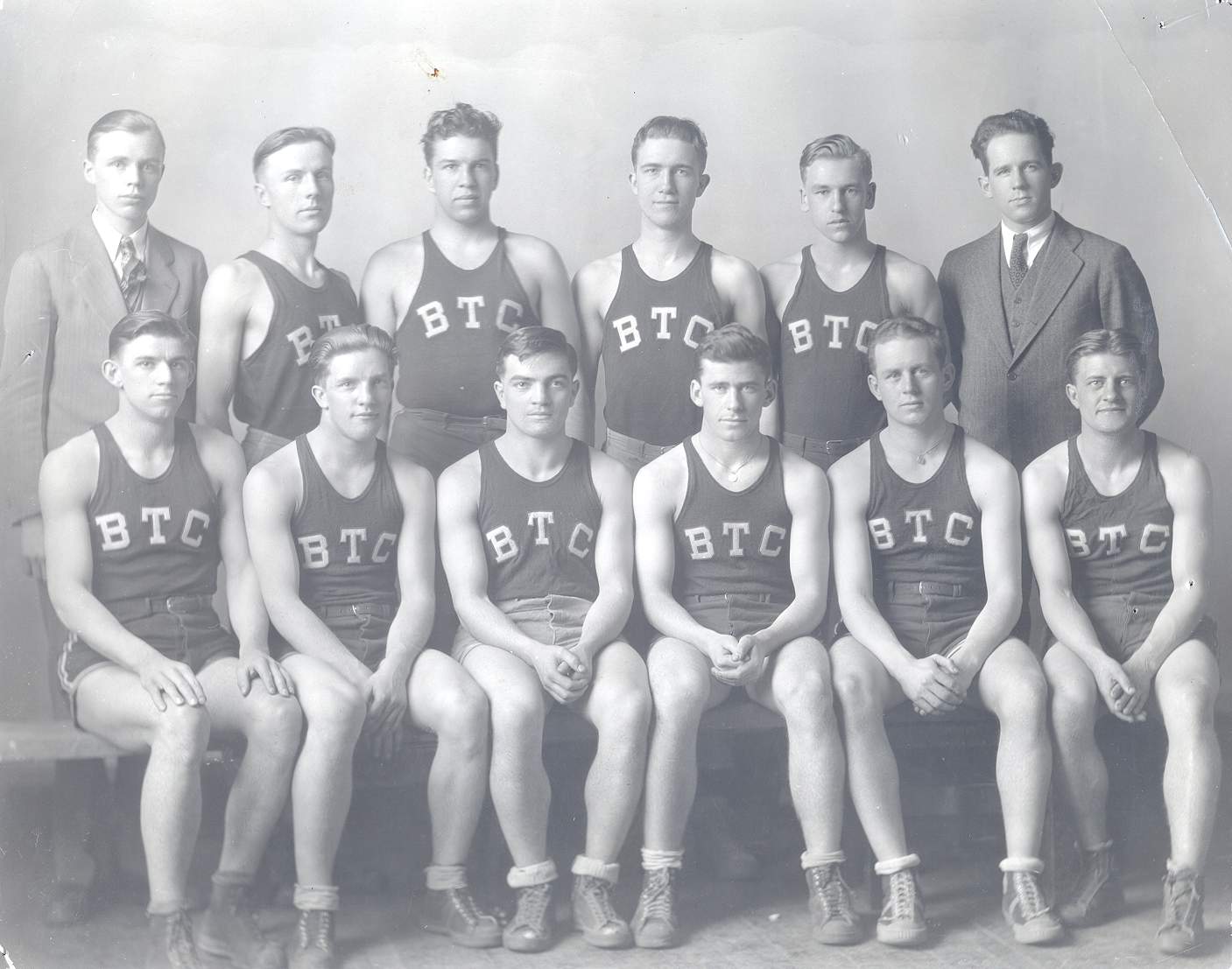
Starting with the 1921-22 season, Bemidji State's men's basketball team became the first group to compete in an extracurricular activity.
The team won its debut game 51-11 against Kelliher High School and finished 6-12 in its first season.
Players on the roster were team captain Wilbur Horns, Richard Romens, Tommy Simons, William Elliott, Percy Riggs, Adolph Bergland, Eugene Paul, Theodore Hermes, Stanley Wilcox and a player identified only by his last name, Greenfield.
Oct. 6-7, 1927
The first Homecoming

Bemidji State Teachers College celebrated its first homecoming on Oct. 6-7, 1927. The event was held at the same time as an area teachers convention in Bemidji, so a considerable number of alumni were present. Rather strangely, President Deputy was not in town that weekend.
The Northern Student newspaper portrayed vividly a description of a portion of the day:
At twelve o'clock the day of the game, the college students including the members of the football squad assembled in front of the high school building, some afoot, others in decorated cars, and led by a pep band, paraded through the downtown district. Then came the big game. The whistle blew at three o'clock and the game was on. In a short time, one thousand fans present saw the seasoned St. Cloud team carry the ball over our goal line...
At an alumni association meeting the morning of the game, it was voted to telegraph the score of the Homecoming game that afternoon to President Deputy, who was visiting in the East. In view of the 26-6 loss, one wonders if it was ever carried out.
Homecoming was a biennial affair until 1931. In that year, the demands of the alumni – eager for this season of reunion – changed it to an annual celebration with all the traditional dinners, teas, parades, dances, bonfires and football games.
May 1932
The naming of the Beavers

As President Manfred Deputy reviewed football practice one evening in May 1932, he remarked that the players were "working hard as beavers." He called the team into a huddle and, raising his hands above their heads, declared, “I christen this team the Beavers!”
The “Beavers” nickname is symbolic of the silent, hard-working teams representing Bemidji State University.
June 6, 1932
Birth of the fireplace by the lakeshore

For nearly 100 years, “the hearth of Bemidji State Teachers College” has stood tall on the banks of Lake Bemidji.
Mary Deputy, wife of President Manfred Deputy, had suggested in 1929 that it would be fine if the college had an outdoor fireplace near the lakeshore. The idea was turned into reality when students, alumni, training school children and faculty began collecting stones from which the fireplace and seats were constructed in the spring of 1932 by M. O. Morse.
The fireplace was dedicated by President Deputy June 6, 1932, "to the spirit of recreation, friendship, and good will." (From lack of use and repair, by 1960 the fireplace was crumbling and the immediate area grown up with tall weeds; thinking that 50th anniversary alumni might be searching this place out at homecoming time, college officials had the fireplace repaired in the summer of 1969.)
The fireplace was moved to its current location, east of the student union, during the 2008-09 school year.
1937
Paul and Babe rise up

Nothing screams "Bemidji" quite like Paul and Babe.
Bemidji's iconic duo has stood tall since 1937. The towering tandem live in downtown Bemidji and serve as the go-to photo op location in town.
Bemidji's civic leaders were searching for a way to stimulate tourism in 1936, so they decided to sponsor a winter carnival and promote the city's resources for winter sports. The carnival became reality on Jan. 14, 1937, but with an added promotional twist: the unveiling of giant concrete statues of Paul Bunyan and Babe the Blue Ox, which were designed to honor Bemidji's logging heritage by serving as mascots for the festivities.
Cyril M. Dickinson served as the "mastermind" behind the creation of the 18-foot-tall Paul, which was modeled after 6-foot Earl Bucklen, a future mayor of Bemidji, on a 3-to-1 scale. Jim Paton supervised construction of Babe.
A whopping 737 manhours went into the construction of Paul, who weighs 2.5 tons. Babe, meanwhile, has horns spanning 14 feet across. The same 3-to-1 scale was used on Babe with the assistance of a local ox.
Babe has permanently stood at Paul's side after a year of touring Minnesota in parades -- with automobile's exhaust pipe hooked up through his nostrils to create the impression that the ox was breathing in the cold air.
Feb. 1, 1938
Charles Sattgast becomes BSTC's second president

Charles R. Sattgast was just the second president in Bemidji State history, serving from 1938 until his death on March 24, 1964, at age 65. He remains the longest-tenured president in BSU history and, at the time of his death, held the record for the longest-serving university or college president in the United States.
During the Sattgast era, Bemidji State expanded from a teacher’s college to one offering liberal arts and graduate studies. Additionally, the campus grew from 20 to 74 acres, making way for science, physical education, industry, arts and dormitory buildings.
Sattgast took a leave from the college in September 1943 to serve in World War II. He became a "Monuments Man" and returned home safely in 1946, then resumed his presidency.
Sattgast was a passionate environmentalist, saving trees on campus whenever he could and spent his leisure time gardening and collecting edible mushrooms. Sattgast was referred to as “a dreamer and immensely honest.”
1941–1945
A college answers the call
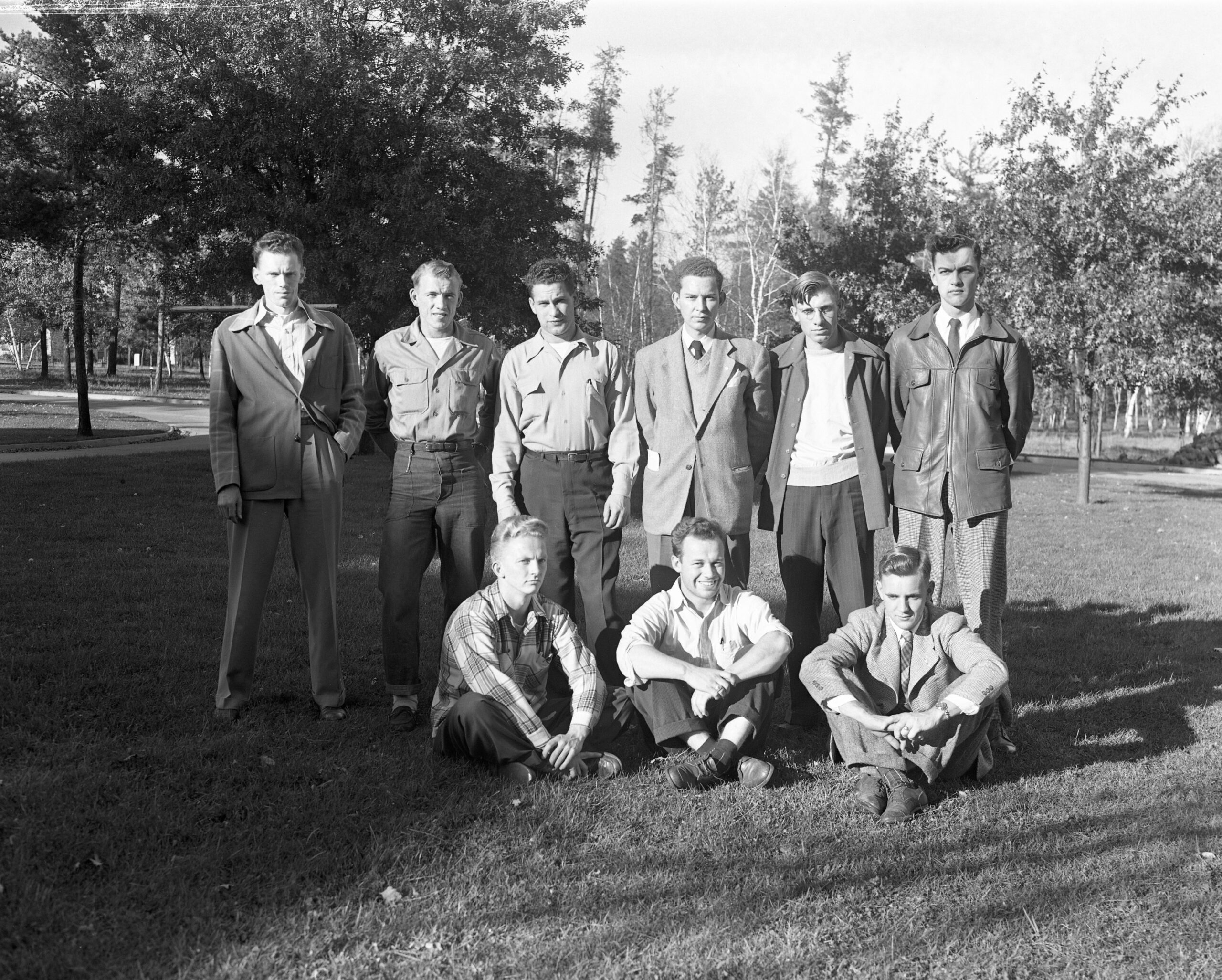
Bemidji State Teachers College had record enrollment of 501 in fall 1940. Then World War II arrived and nearly emptied the campus of men. In 1944, only 18 male students remained, and enrollment had sunk to 123 by spring of ’45. Grads were in great demand, as female teachers stepped into administration and coaching. When President Charles Sattgast enlisted in 1943, A.C. Clark filled in as acting president until 1946. Twenty former students were killed in the war.
After the war, the 1944 Servicemen’s Readjustment Act, better known as the GI Bill, brought a new age of education to postwar America. Enrollment at BSTC shot up to 575 by 1946, and men outnumbered women three to one. Men and married couples were crowded into two relocated barracks that had previously housed conservation corps workers and German POWs. Students’ attention turned to things like athletics, dating and the green and white beanie caps now required for freshmen.
September 1943
Sattgast becomes a Monuments Man
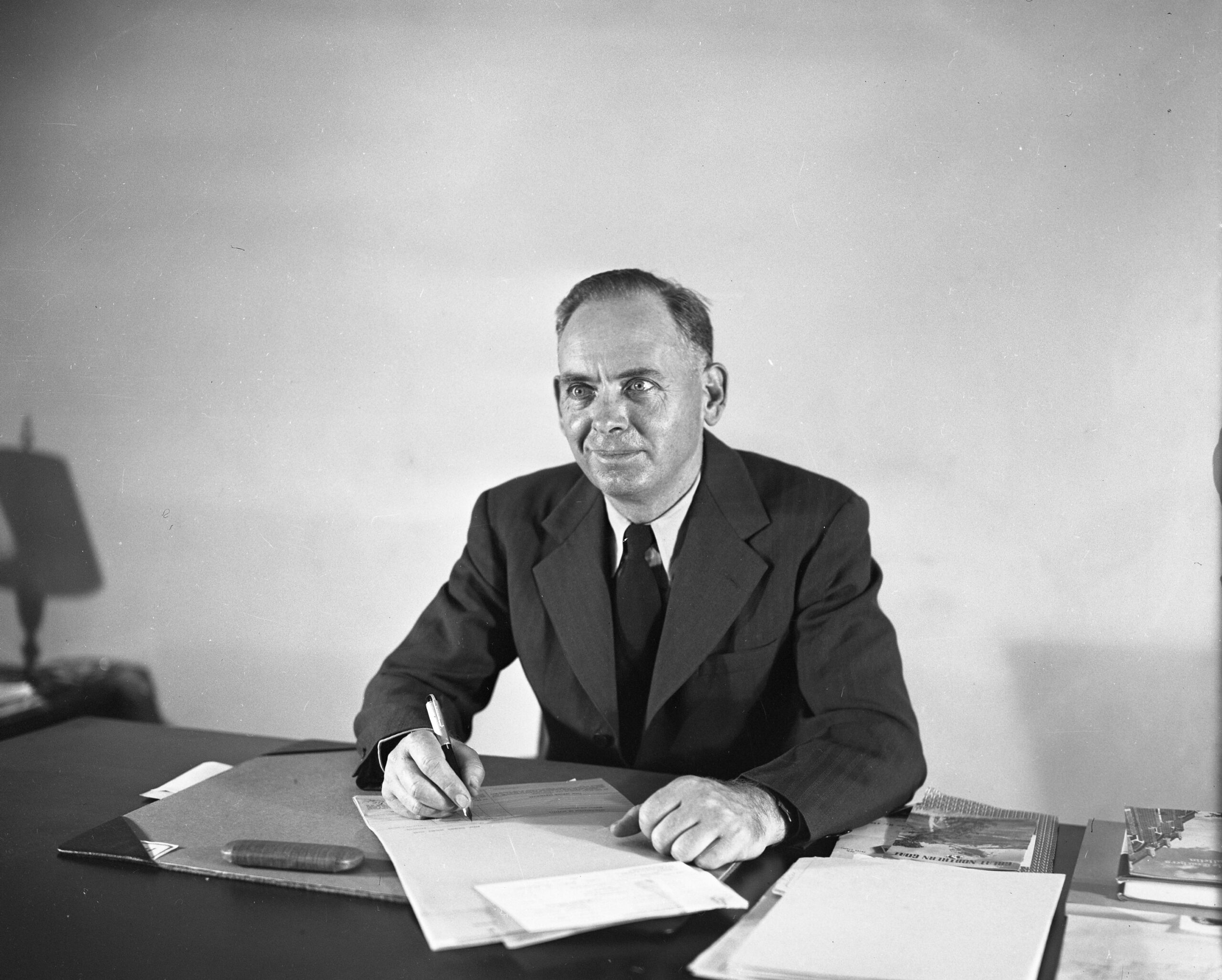
President Charles Sattgast took leave from the college in September 1943. According to family records, Sattgast felt he needed to be a leader and join the many young Bemidji State students and faculty who were fighting for the country in World War II.
While serving, Sattgast was part of a group that is now known as the Monuments Men. This group’s mission was to retrieve monuments and important historical items before a raid came through. Sattgast was asked to be part of this group based on his knowledge of history and the arts. He returned safely home in 1946.
1944
Football team goes undefeated

The small male population at Bemidji State kept dropping during World War II so that by the fall of 1944, only 18 men remained on campus. Despite this fact, Bemidji became the only State College to continue football without interruption throughout the war years. Indeed, the 1944 team had an undefeated season, although reportedly Coach “Jolly” Erickson had to round up some townspeople to fill in occasionally on the day of the games. They played four games, home and away contests, with Eau Claire and Concordia Moorhead.
1946
Expanding programs and degrees

After only incremental curriculum change during the first two decades at Bemidji State Teachers College, a bachelor of arts degree was added in 1946, though it had few takers. Not until 1950 did BSTC offer a specialized B.S. in business education and a major in American humanities – and a drama workshop was created in 1952. A master of science in education was offered starting in 1953, and in 1969, the college awarded 55 master’s degrees.
Jan. 26, 1947
Beaver Hockey is forged
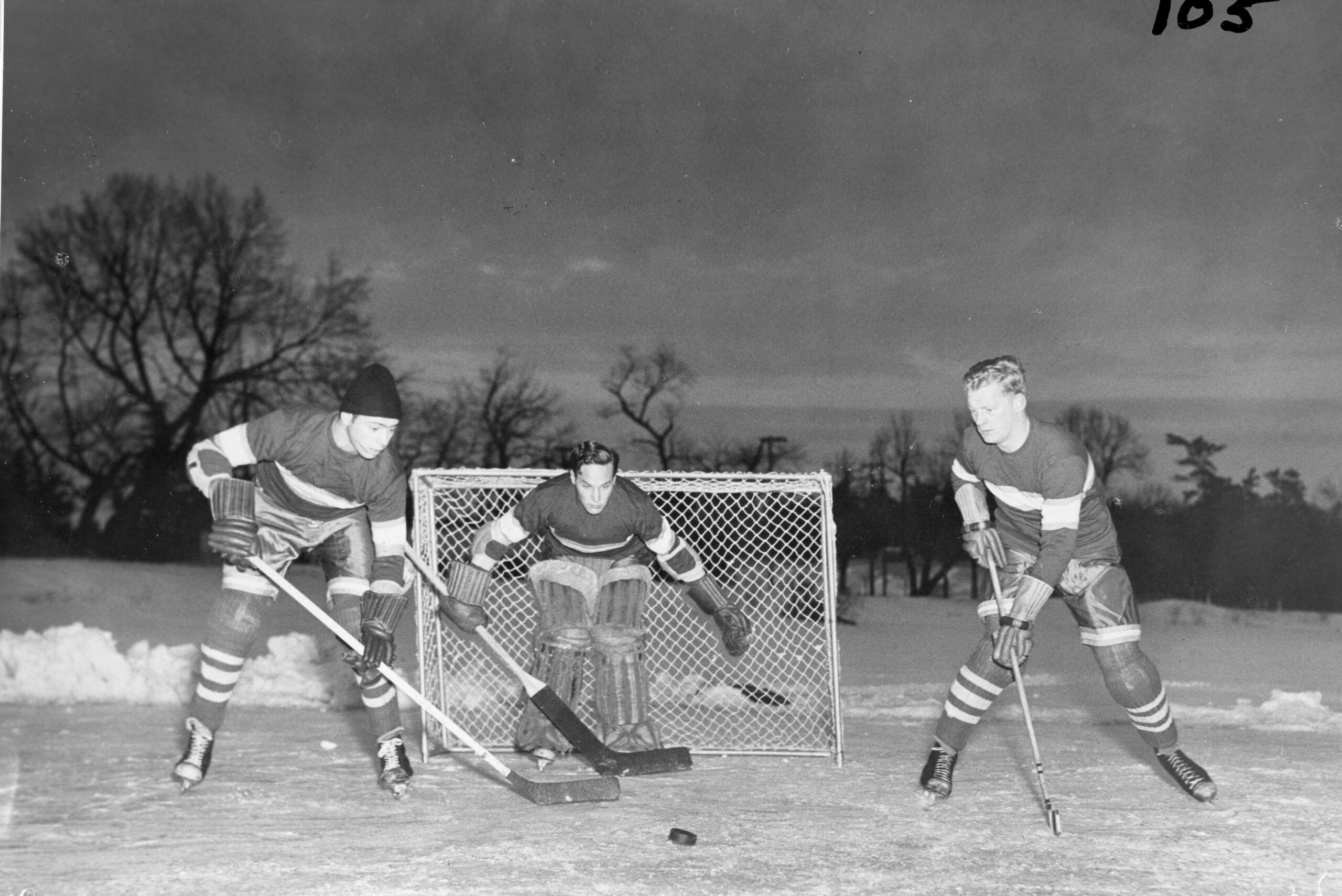
In 1947, the Bemidji State men's hockey team began what would grow into one of the greatest college hockey dynasties in the country. The program played its first game on Jan. 26, 1947, a loss to Itasca Junior College.
By 1948, the Beavers played their first season indoors at a city facility called the Bemidji Sports Arena until the roof collapsed under the heavy snow of 1949. The team moved outdoors, where they skated until the snowplow used to clear the playing ice on Lake Bemidji broke through into four feet of water.
Jinxed, the team was shelved after the 1950 season, waiting for almost a decade before the next player strapped on skates for Bemidji State.
But if trials build character, Beaver Hockey was always destined for greatness.
After the fiascos of the 1940s, the puck finally dropped again in Bemidji on Feb. 13, 1960. But the Beavers bounced around venues – from the 17th Street Rink to the College Rink (often referred to as the 19th Street Rink) to the indoor John S. Glas Fieldhouse by 1967. The rink-to-rink whiplash earned the team a local nickname of “Hard Luck Boys.”
A turning point for the program came in 1966, when North Dakota head coach R.H. “Bob” Peters was hired to serve as the program’s fifth head coach. Peters, who had played goaltender at UND and helped lead the Fighting Sioux to the 1965 national semifinals, was lured to Bemidji primarily by the indoor arena being constructed on campus.
Under Peters, the Beavers won 13 national champions and became one of the best programs in the country.
1950
A boom in construction
 A 20-year wave of campus construction, remarkable in hindsight, began in 1950 with completion of a new home for the Laboratory School, which was renamed Bensen Hall in 2012. Birch Hall, the first of seven new dormitories built by 1969, was completed in 1952, followed by Linden Hall in 1959. The first phase of a new physical education complex, also completed in ‘59, included a gymnasium, swimming pool and indoor hockey arena with seating for 3,000.
A 20-year wave of campus construction, remarkable in hindsight, began in 1950 with completion of a new home for the Laboratory School, which was renamed Bensen Hall in 2012. Birch Hall, the first of seven new dormitories built by 1969, was completed in 1952, followed by Linden Hall in 1959. The first phase of a new physical education complex, also completed in ‘59, included a gymnasium, swimming pool and indoor hockey arena with seating for 3,000.
1957
Changing the name

Reflecting ongoing changes in the curriculum, the school was renamed Bemidji State College in 1957.
1958
Enrollment hits 1,000

In the first issue of the Northern Student in the fall of 1958, there is a three-column picture of a scene at registration. With a smiling President Sattgast on one side, and other smiling faces around him, it shows a young man from Crookston, Alden LaRochelle, holding a large piece of paper on which is written the number 1,000. (He's the only one in the scene not smiling.)
Another record enrollment had arrived, this one special because of the plus-1,000 tally. Turned out that it was barely that, the total making it to 1,003 students, but it was still a special number and a watershed year for Bemidji State.
1961–1965
Vikings launch on Lake Bemidji

The Minnesota Vikings began in Bemidji before anywhere else. From 1961-65, the new NFL franchise used Bemidji as its training camp home and played on the practice field where Hagg-Sauer Hall now stands.
The rookies arrived at the Bemidji State College training facilities on July 7, 1961, but when the veterans arrived July 17, Bemidji locals were amazed at the size of the men who seemed to rival the 18-foot concrete lumberjack on the shores of Lake Bemidji.
In the five years the Vikings held their training camps in Bemidji, hundreds of people watched their daily practices. Intrasquad scrimmages – just $1.50 per ticket – put proceeds into BSC athletic department coffers. Their presence in northern Minnesota did a great deal to grow outstate support for the new team. At their first intrasquad scrimmage, the Park Rapids marching band performed, and some 200 Vikings boosters from International Falls came to watch the event.
On Aug. 4, 1962, the biggest event of that summer – and possibly the biggest of the five years the Vikings trained in Bemidji – was a controlled scrimmage against the Dallas Cowboys (formed in 1960) right here at Chet Anderson Stadium in Bemidji. Former Bemidji High School Lumberjack and all-stater Mike Falls was a starting offensive guard for Dallas, so hometown fans had another reason to attend. Four thousand bleacher seats were brought in to expand the capacity to 7,200, not including standing room. Heavy rain just before the event kept some of the expected 8,000 fans from coming, but the Bemidji Daily Pioneer reported that 5,503 attended. Although neither team scored a touchdown, the scrimmage ended with mostly defensive “points” and the Vikes leading 34-31.
1965
Charismatic Harry Bangsberg leads BSC
 In 1965, the young and charismatic Harry F. Bangsberg became president at Bemidji State.
In 1965, the young and charismatic Harry F. Bangsberg became president at Bemidji State.
Bangsberg encouraged student participation in making decisions affecting the college. He believed that faculty and students should get involved in the world around them and, through his work with the Boy Scouts, his church, as a Rotarian and as a member of many North Central Association accrediting teams, he led the way.
He worked to develop a cultural arts program at Bemidji State College, which attracted people of northern Minnesota to the campus so they could share in the good things that the world of music, arts and letters offered.
Under Bangsberg's guidance, the curriculum was strengthened in the direction of liberal arts, and he worked to develop programs in the Asian studies, in social science and in literature. He initiated the work that led to the 1967 legislative decision to allow Bemidji State to offer a master of arts degree.
And in spite of Bangsberg's professional and community achievements, he was a family man. Weekend afternoons in the winter would find him on the ski slope or at the pool with his five children and his wife, Trudy. In the summer, he enjoyed his garden, sailing and fishing for walleye.
Many in Bemidji compared Bangsberg's college presidency to the national presidency of John F. Kennedy. Bangsberg, a young college president at age 36, was full of ideas and zest, and he brought to the campus a freshness and vitality that were infectious in the college and community. Probably more than specific reforms and innovations, he added to the atmosphere a spirit of enthusiasm and a general feeling that the whole school was moving ahead in a useful, positive direction.
March 23, 1967
Bangsberg dies in tragic plane crash
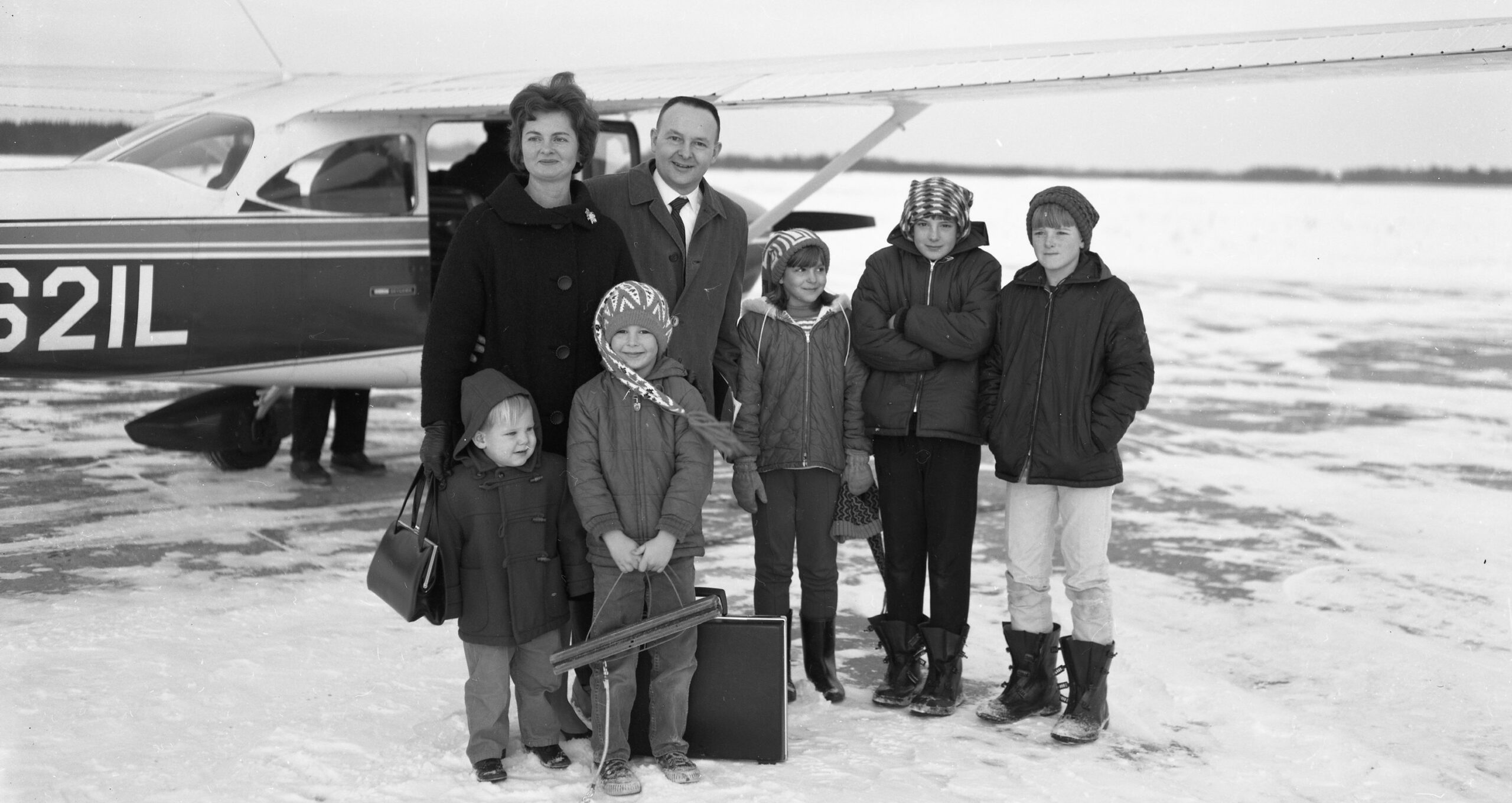
On Nov. 18, 1966, President Harry Bangsberg asked the State College Board for a leave of absence without pay to join a team of seven other higher education administrators formed to help advice the government of South Vietnam on the development of public higher education in that country.
Bangsberg left Bemidji on Jan. 2, 1967. Prior to his departure from the Bemidji airport, Bangsberg anticipated to be sent off by only his immediate family was surprised and eventually overwhelmed at seeing the airport terminal filled with well-wishers.
On March 23, 1967, Bangsberg and the entire advisory team, along with the plane’s crew members, were killed when their twin-engine Air American plane crashed into a mountain side north of Danang, South Vietnam. The crash occurred on the final leg of their planned flight from Saigon to Hue, the old imperial capital city. Rain and turbulence had forced the pilot to land first in Danang, but after a short wait on the ground, the pilot decided to complete the final 80 miles in spite of the inclement weather.
The news of Bangsberg’s death came to Bemidji on the morning of March 24, 1967, shocking the campus and local community. An overflowing, somber crowd filled the physical education arena for a memorial service on March 29 accompanied by the college-community orchestra and the college choir.
1967–1968
Faculty and students rise in protest
 In a year rocked by the assassinations of the Rev. Martin Luther King Jr. and Robert Kennedy, BSC faculty and students in 1968 began to publicly oppose America’s war in Vietnam. Protest, always peaceful, came in classroom digressions and at campus forums. In 1969, marchers in black armbands strode downtown and engaged in public dialogue with Bemidji’s city manager. In 1967, students had also protested delay in appointment of a president to succeed Harry Bangsberg.
In a year rocked by the assassinations of the Rev. Martin Luther King Jr. and Robert Kennedy, BSC faculty and students in 1968 began to publicly oppose America’s war in Vietnam. Protest, always peaceful, came in classroom digressions and at campus forums. In 1969, marchers in black armbands strode downtown and engaged in public dialogue with Bemidji’s city manager. In 1967, students had also protested delay in appointment of a president to succeed Harry Bangsberg.
1968
Robert Decker fills the president vacancy
 Robert Decker served as Bemidji State University's president for 12 years and was very influential in what was considered the “great expansion.” Eight buildings were built, three existing buildings were renovated and the enrollment hit an all-time high of 5,787 students.
Robert Decker served as Bemidji State University's president for 12 years and was very influential in what was considered the “great expansion.” Eight buildings were built, three existing buildings were renovated and the enrollment hit an all-time high of 5,787 students.
Decker also introduced a wide variety of new programs at the school, including computer science, criminal justice, technical illustration/graphic design, communication media and American Indian studies. The Center for Environmental Studies, the Foreign Studies Program and the Veterans Affairs Office were also created under his presidency.
1969
A new focus on American Indians
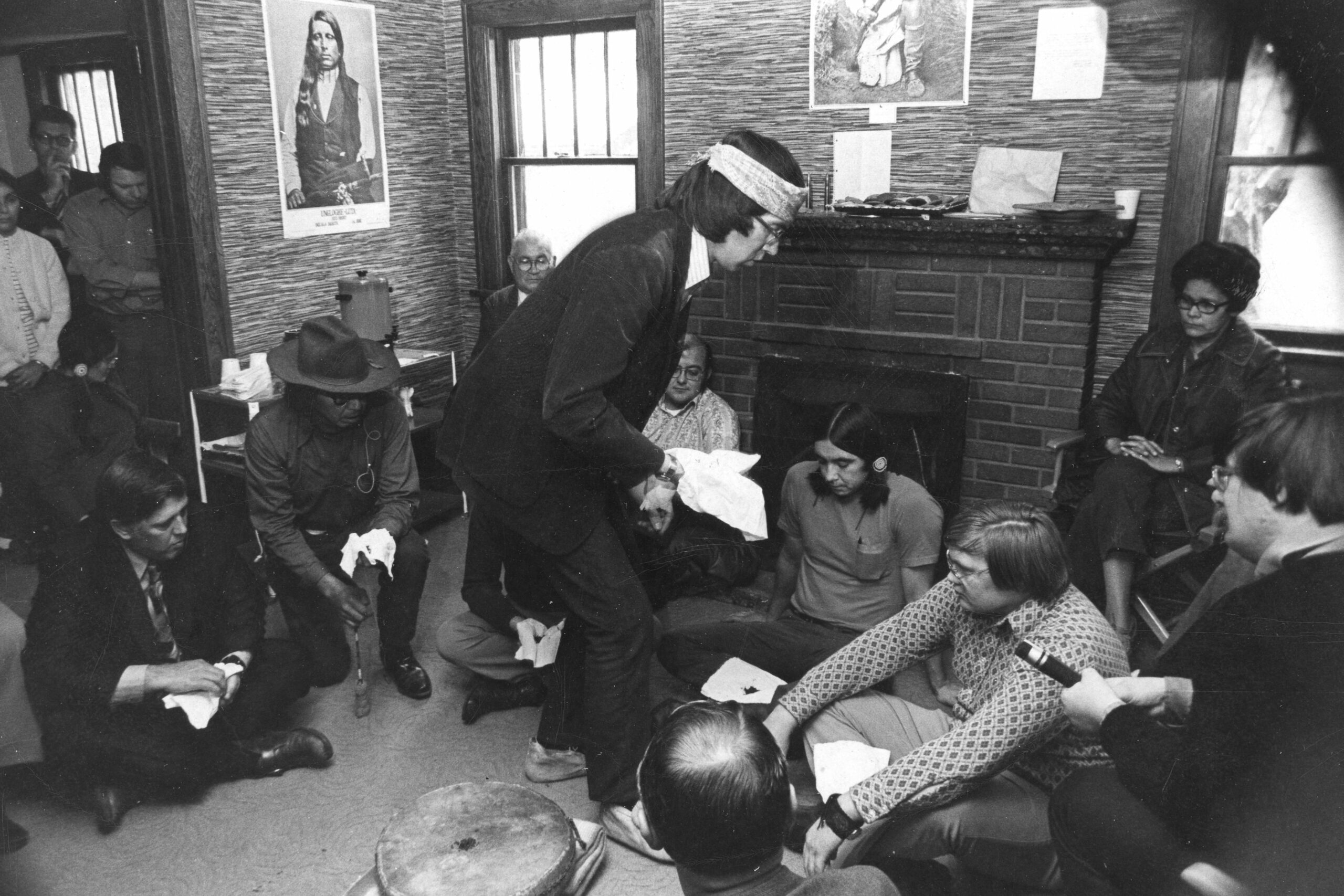
Discussion of Bemidji's Indigenous history and how to serve students from surrounding tribal nations coincided with the American Indian political movement of the late 1960s. In 1969, Bemidji State launched the world's first collegiate Ojibwe language program and Minnesota's first Indian Studies program.
The next year, the Anishinaabe Family Center – also known as the Indian Studies Center – opened on campus, and Native students formed the Amerind Club, which became the Council of Indian Students. Momentum led to completion of the American Indian Resource Center in 2003.
1969
Women's athletics take hold
 A group of pioneering women positioned Bemidji State to help lead a revolution in varsity athletics. The college was a charter member of the women’s Minn-Kota Conference in 1969, four years before a new law called Title IX required gender equity in intercollegiate sports. Beginning with field hockey, track, volleyball and basketball, BSC quickly became a regional power. By 1979, it also had women's teams in tennis, cross country, gymnastics and swimming and diving.
A group of pioneering women positioned Bemidji State to help lead a revolution in varsity athletics. The college was a charter member of the women’s Minn-Kota Conference in 1969, four years before a new law called Title IX required gender equity in intercollegiate sports. Beginning with field hockey, track, volleyball and basketball, BSC quickly became a regional power. By 1979, it also had women's teams in tennis, cross country, gymnastics and swimming and diving.
Physical education faculty members Ruth Howe, Myrtie Hunt and Betsy McDowell were pioneers in the field, and the three are recognized as the official founders of women's athletics at Bemidji State.
1975
BSC becomes BSU

Bemidji State College became Bemidji State University in 1975 behind a decade of maturation that concluded a 20-year building boom, with Hagg-Sauer Hall (1970), the Bangsberg Fine Arts Complex (1971) and the Peters Aquatics Lab (1972). On-campus enrollment reached 4,865 in 1971. The university had 70 undergraduate programs, although in 1979 only 34 women were among its 197 faculty.
April 9, 1980
Rebecca Stafford becomes BSU's first female president
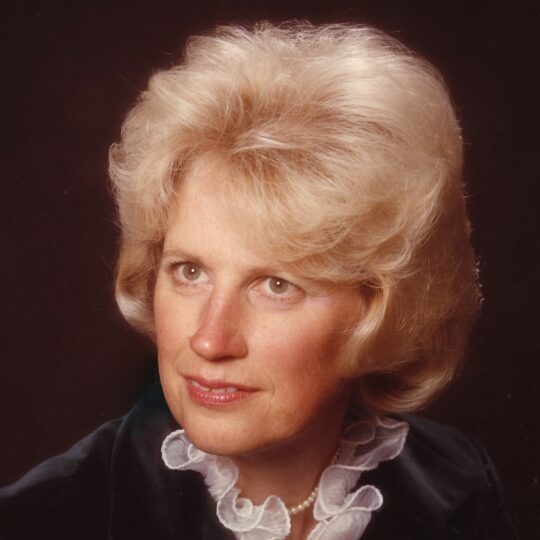
Rebecca Stafford served as president of Bemidji State University from April 9, 1980, to Dec. 16, 1981, and was the first woman to hold the position at BSU.
Stafford, a Harvard-educated sociologist, raised alarm with a "Program Planning and Review" that required departments and offices to justify their existence. Budget constraints made the effort moot, but morale suffered. After 20 months, Dr. Stafford quit mid-year to take another job.
Aug. 1, 1982
Ted Gillett begins watch of BSU

Lowell Reno “Ted” Gillett became Bemidji State's sixth president on Aug. 1, 1982.
Gillett's time as president was highlighted by student-centered construction and renovation projects. One of his constructions was the building of the Gillett Wellness Center, which is named in his honor, and considered by some as “perhaps the single most significant physical improvement in making the campus more attractive to students.” Gillett was also successful in renovating part of Pine Hall into apartments for students who were single parents in 1990. Today, Cedar Hall is used as the building for single parents to live in with their children, while Pine Hall houses freshmen. Also under Gillett, the Alumni Arch outside of Deputy Hall was established, which has become the university’s most distinguished landmark and serves as the unofficial gateway to campus.
Ted Gillett was considered a very public man. He attended all campus events, along with events that took place in the community.
December 1989
Gillett Wellness Center built

The Gillett Wellness Center, an 85,000-square-foot facility, was completed in 1989. The building featured a weight room and exercise machines, racquetball/handball courts, a 200-meter track and tennis/basketball courts.
Today, the Gillett Wellness Center is open for informal or open recreation seven days a week during the academic school year and through its varied activities, campus fitness and recreation as an integral part of university life.
The facility was named after President Lowell "Ted" Gillett – the man who oversaw its completion – as the Gillett Fitness-Recreation Center in May 1995. It was renamed the Gillett Wellness Center in 2016.
1989–1990
Minnesota State University-Bemidji??

During the 1998-99 academic year, the Board of Trustees recommended changing the name of the university to "Minnesota State University-Bemidji" to reflect a change toward unification within the newly formed Minnesota State Colleges and Universities System after other larger institutions had done so.
Prominent vocal and written opposition from students, alumni, and local Bemidji residents forced the board to withdraw the recommendation to change the name, and "Bemidji State University" prevailed.
July 1, 1990
Likeable Les Duly pours into BSU
 After he became president on July 1, 1990, Les Duly said he wanted to spend a week living in Tamarack Hall, dining with students at Wally’s and listening to their concerns.
After he became president on July 1, 1990, Les Duly said he wanted to spend a week living in Tamarack Hall, dining with students at Wally’s and listening to their concerns.
Under Duly’s presidency, Bemidji State University was listed as the highest-ranked Minnesota State University in America's Best Colleges. Duly also helped the school receive extra funding for things like summer programs for gifted Native American students, funds from NASA to continue a study on the effect of radiation on eye tissue and also a grant from the Ford Foundation, giving Bemidji $236,000 to be used toward a new program for multicultural curriculum.
Duly was a very easygoing and happy man. He proved he cared for the university and the students by walking around, making conversation, filling coffee cups, scooping ice cream at socials and even bringing a cake to meetings. Duly wanted to be involved with the students as much as possible.
Duly made great changes to Bemidji State, but it sadly came to an end when he died of a heart attack on May 8, 1993. The school held a memorial service where many people reminisced about all the great things Duly had accomplished at the school.
1990
Apartment innovations
 Among BSU’s noteworthy innovations was the 1990 renovation of an entire wing of Pine Hall into Cedar Apartments – a home for some of its 300 students who were single parents. The apartments were one-, two- and three-bedroom units, and daycare and playground facilities were extended outside. The initiative, certified by the U.S. Department of Housing and Urban Development, drew inquiries and later imitators from around the nation.
Among BSU’s noteworthy innovations was the 1990 renovation of an entire wing of Pine Hall into Cedar Apartments – a home for some of its 300 students who were single parents. The apartments were one-, two- and three-bedroom units, and daycare and playground facilities were extended outside. The initiative, certified by the U.S. Department of Housing and Urban Development, drew inquiries and later imitators from around the nation.
December 1991
Park House becomes home to the Alumni & Foundation

An art deco building along Birchmont Drive became part of the university in 1991 when the Bemidji State Foundation and the Alumni Association bought it from the Park family for $92,000. Completed in 1937, the gem of Modern architecture had been home to creamery owner David Park. With its smooth surfaces, flowing lines and repetitive, geometrical detailing, the striking house stood as a classic example of the Streamline Moderne style popularized in Florida or California, though certainly not Bemidji, during the 1920s and 1930s.
One of the most remarkable features of the house is its three-story brass railing on the curved staircase. The railing, which imitates a music note, had to be installed at an early point in the construction and the house closed in around it.
The house was added to the National Register of Historical Places in 1988 and is still Bemidji’s only home on the list.
July 15, 1993
Famous Alumni Arch rises up

Bemidji State's Alumni Arch and Founders' Walk serve as a way to recognize the many persons who gave special assistance to the school's operation, especially in those earliest, formative years. It was dedicated on July 15, 1993, not coincidentally the same day that the school kicked off its 75th anniversary celebration.
Commemorative plaques of honor are attached to the brick columns that support the archway entrance leading to Deputy Hall, this location being one of the most prominent on campus and regarded as the official entrance to Bemidji State.
Currently, 12 plaques hang on the arches.
The Alumni Arch is perhaps BSU's most recognizable landmark. It serves as the university's unofficial front door and is a gateway to the entire campus.
July 1, 1994
Visionary James Bensen begins tenure

James Bensen began his presidency on July 1, 1994. He was the eighth permanent president of the university and the first alumnus to hold the position.
Bensen was an architect of growth and Bemidji’s quintessential visionary, both during and after his presidency.
Originally from Erskine, he first came to Bemidji State College as a student and graduated in 1959 with bachelor’s degrees in industrial education and physical education. In 1994, Bensen was unanimously voted in as the school’s new president – becoming the first BSU graduate to serve in that role – and tirelessly championed economic growth at the university and in the community.
Oct. 14, 1995
The first Homecoming lake jump

There is a tradition at Bemidji State that the majority of college campuses in the nation physically can’t adopt. Being one of just a handful of college football fields with a lake as its neighbor, the Beavers have a Homecoming victory tradition like no other. After a Homecoming win, gear and all, the BSU players and coaches celebrate by taking a dip into Lake Bemidji, splashing around and singing the school song.
During the 1993 season, the Beavers were off to an 0-4 start. In an attempt to motivate the team and the campus for Homecoming, graduate assistant coach Frank Haege wrote a faux postgame recap of the upcoming game between Bemidji State and Southwest State. The article included accounts of how the defense dammed the Mustangs and how the offense executed with precision. Haege also added that, after the victory, the Beavers jumped into Lake Bemidji in a fit of jubilation! Haege and others posted the article around campus during the week leading up to Homecoming.
The Beavers went on to lose that Homecoming game 35-8 and never did win a game that season, finishing 0-10. There were further threats of jumping into the lake if the Beavers won on Homecoming the following year, but BSU lost to Moorhead 33-6 in 1994.
Finally, in perhaps Bemidji State’s best effort during the Kris Diaz era, the Beavers beat defending conference champion Winona State 24-14 on Homecoming in 1995. Off went the helmets, and into Lake Bemidji went the players and coaches. Everything went in – shoes, equipment, jerseys and all. A tradition was born.
Before that jump in the lake, Bemidji State was just 1-26 in their past 27 games. But after that victory over Winona State, the Beavers went on to beat Minnesota Morris and Northern State for their first three-game winning streak in over a decade.
Since 1995, BSU has been celebrating victories in its annual Homecoming football game with a postgame lake jump into the waters of Lake Bemidji, which borders Chet Anderson Stadium on the east.
Aug. 24, 2001
"Q" leads the college
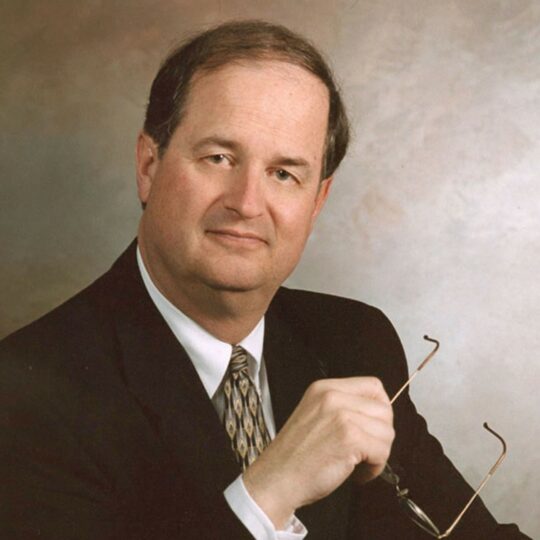 Jon Quistgaard served as President of Bemidji State University from August 2001-July 2010.
Jon Quistgaard served as President of Bemidji State University from August 2001-July 2010.
Quistgaard was known for being approachable and friendly to students and staff, who came to know him as “Q.” Quistgaard believed deeply in the values of the university, and once said that “the true greatness of both these institutions is still in front of us.”
During his tenure at Bemidji State, there were major changes in technology, enrollment, funding and diversity. Most notably, the school diversified to include students from more than 30 states and 40 countries. Quistgaard recalls seeing more adults and military veterans seeking opportunities to further their education.
Oct. 4, 2003
Dedication of American Indian Resource Center

After many years of planning and development, the American Indian Resource Center opened in 2003 with a celebration that included a powwow, open house and ribbon cutting. The AIRC was funded largely by the Minnesota Legislature with additional resources provided by foundations, tribal governments and many individuals and groups.
“If you do not dream, if you do not have a vision, nothing will ever happen,” said Lee Cook, the director of the AIRC upon its opening. “Those early people were dreamers and visionaries who set us on a path leading to where we are now. And what has been constructed today is a bigger building with a bigger mission than they ever envisioned.”
The AIRC fulfilled a long-recognized need on campus, that a space be created where American Indian students could gather for learning, support and cultural interaction. The ultimate goal was and is to enhance the recruitment, retention and graduation of American Indian students.
Nov. 17, 2008
BSU takes the pledge
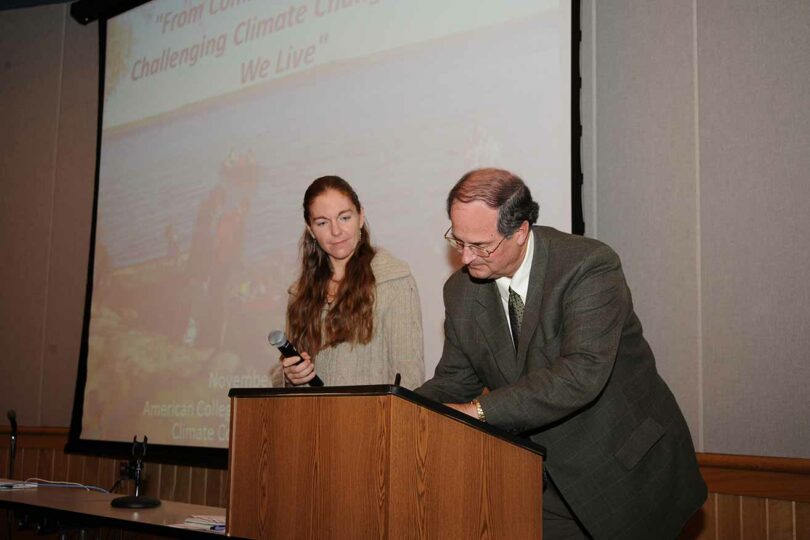 As consensus coalesced behind human-caused climate change, environmental concern intensified at Bemidji State. In 2004, that stewardship became a university “Signature Theme,” and in 2008, students agreed to a $5-per-semester “green fee” for education and action.
As consensus coalesced behind human-caused climate change, environmental concern intensified at Bemidji State. In 2004, that stewardship became a university “Signature Theme,” and in 2008, students agreed to a $5-per-semester “green fee” for education and action.
Also in 2008, President Jon Quistgaard signed the Presidents’ Climate Commitment, pledging that BSU will be carbon neutral by 2050. Thanks to ongoing efforts, BSU was named a Green Ribbon School by the U.S. Department of Education in 2017.
July 12, 2010
Richard Hanson becomes president
 Dr. Richard Hanson served as president of Bemidji State University and Northwest Technical College from July 2010-June 2016.
Dr. Richard Hanson served as president of Bemidji State University and Northwest Technical College from July 2010-June 2016.
Among his accomplishments, Hanson implemented a broad restructuring of course offerings at Bemidji State University and Northwest Technical College in an effort to adapt to current market conditions, resulting in increased competitiveness for both institutions. He ushered in a new era in men’s and women’s athletics, when in 2010, Beaver Hockey opened a new arena at the Sanford Center, then called the Bemidji Regional Events Center. With the help of the student body, Hanson also founded the Bemidji School of Nursing, coordinating the instructional efforts of both NTC and BSU. He renamed the Education-Arts building as Bensen Hall, in honor of President emeritus James Bensen.
Oct. 15, 2010
Beaver Hockey breaks in the Sanford Center
 A decision by President Jim Bensen led to the 2010 opening of a sparkling 4,700-seat arena as home ice for Beaver Hockey, funded with state bonds and city taxes. The new Bemidji Regional Events Center, later renamed the Sanford Center, enabled the men's team to join the Western Collegiate Hockey Association, while both the men's and women's teams have called it home ever since.
A decision by President Jim Bensen led to the 2010 opening of a sparkling 4,700-seat arena as home ice for Beaver Hockey, funded with state bonds and city taxes. The new Bemidji Regional Events Center, later renamed the Sanford Center, enabled the men's team to join the Western Collegiate Hockey Association, while both the men's and women's teams have called it home ever since.
2011–2016
Imagine Tomorrow campaign raises $36.5 million

Three years after publicly launching a five-year fundraising campaign at the Homecoming Honors Gala, Bemidji State University chose the same event to reveal its full success: $36.54 million in total gifts and pledges that eclipsed a $35 million goal.
The comprehensive campaign, the university’s first ever, began in low-key mode on July 1, 2011, and concluded on June 30, 2016.
Gold glitter rained down at the 2016 Honors Gala in the Sanford Center ballroom as a crowd of 450 alumni and friends toasted their achievement with champagne, then hit the dance floor as a 12-piece band kicked in with “Celebration.”
Nearly half of the total raised – $17.9 million – supported scholarships, doubling the amount of scholarships BSU provides its students, and an additional $4.2 million supported academic programs. Another $11.2 million came from annual giving that the university earmarked for its highest priorities, and $3.2 million in planned gifts were to be received upon donors’ passings.
More than 5,600 donors contributed to Imagine Tomorrow, including 1,434 who had not previously contributed to the university.
In addition to a doubling in annual scholarship dollars – from $700,000 in 2011 to $1.4 million in 2016 – Imagine Tomorrow funds went to support a BSU Gallery in downtown Bemidji’s Watermark Art Center; travel for BSU musical groups; new artificial turf at Chet Anderson Stadium; a total upgrade of BSU’s Mass Communication facilities; emergency support for American Indian students; and a new residence and meeting place for Honors Program students.
July 1, 2016
Faith Hensrud takes the helm

Dr. Faith C. Hensrud was announced as the 11th president of Bemidji State University on April 20, 2016, assuming the role on July 1 of that year.
Her tenure was defined by extensive strategic planning processes, broad-ranging successes in forging new partnerships and a diligent emphasis on social justice. She also renewed BSU’s commitment to environmental sustainability by joining the Campus Climate Commitment. Her efforts to improve the connections with the region’s Indigenous nations led to the creation of American Indian Advisory Councils for both BSU and NTC. Under her leadership, BSU also signed dual-enrollment agreements with all four Minnesota tribal colleges and led a process to craft an acknowledgment of BSU’s campus location on ancestral homelands of the Ojibwe and Dakota people.
Hensrud also guided both BSU and NTC safely through the first 18 months of the COVID-19 pandemic. Both campuses shared in the wide-ranging disruptions caused by the pandemic and various mitigation strategies. However, due in part to their shared pandemic response, at the time of her retirement neither BSU nor NTC had a confirmed case of COVID-19 as a result of on-campus spread and no employees or students had been lost to the virus.
She is also a U.S. Army veteran, serving on active duty with the 24th Transportation Battalion at Ft. Eustis, Virginia, from 1986-89 and as a member of the U.S. Army Reserve from 1989-2000.
April 12, 2018
A Bemidji State Centennial
BSU kicked off an 18-month celebration in honor of its centennial, which led up to its 100-year anniversary in 2019.
BSU's Centennial Kickoff Celebration featured music, dance and a history walk featuring artifacts from the university’s past and banners highlighting notable events, activities and people throughout the university’s first century of existence.
The kickoff was held just days following the 100th anniversary of groundbreaking for “The Main,” a building which would house the state of Minnesota’s sixth normal school for teacher education. The crews began clearing trees for The Main’s construction on April 4, 1918, and the building – now known as Deputy Hall – was ready to host its first class of students in 1919.
The two dozen students who first entered The Main to fulfill their dreams of becoming teachers also took the first steps of our 100-year journey to become a campus that today is home to more than 50,000 alumni.
In her remarks during the kickoff celebration, BSU President Faith C. Hensrud said history is not some faraway land or parallel universe.
“Every day, as we go about our business at Bemidji State, we are walking in the very footsteps of the generations who came before us,” she said.
Nov. 12, 2020
New Hagg-Sauer unveiled
 A decade-long dream to replace Hagg-Sauer Hall was finally realized in 2020. A new building, which won numerous awards for government construction projects, was part of an extensive campus renovation project which re-imagined space in four other academic buildings.
A decade-long dream to replace Hagg-Sauer Hall was finally realized in 2020. A new building, which won numerous awards for government construction projects, was part of an extensive campus renovation project which re-imagined space in four other academic buildings.
July 1, 2022
John Hoffman Named President of BSU and NTC

John Hoffman assumed the presidency of Bemidji State University and Northwest Technical College on July 1, 2022.
Hoffman is the husband of Dr. Joy Hoffman and the proud stepfather of Hanna and CJ. He enjoys daily walks with his dog, occasional home improvement projects, listening to music and the annual hope and heartbreak of being a Minnesota Vikings fan.
Hoffman succeeded Faith Hensrud, who had served as president since 2016.
Nov. 18-20, 2022
Bemidji State hosts the "mega-weekend"
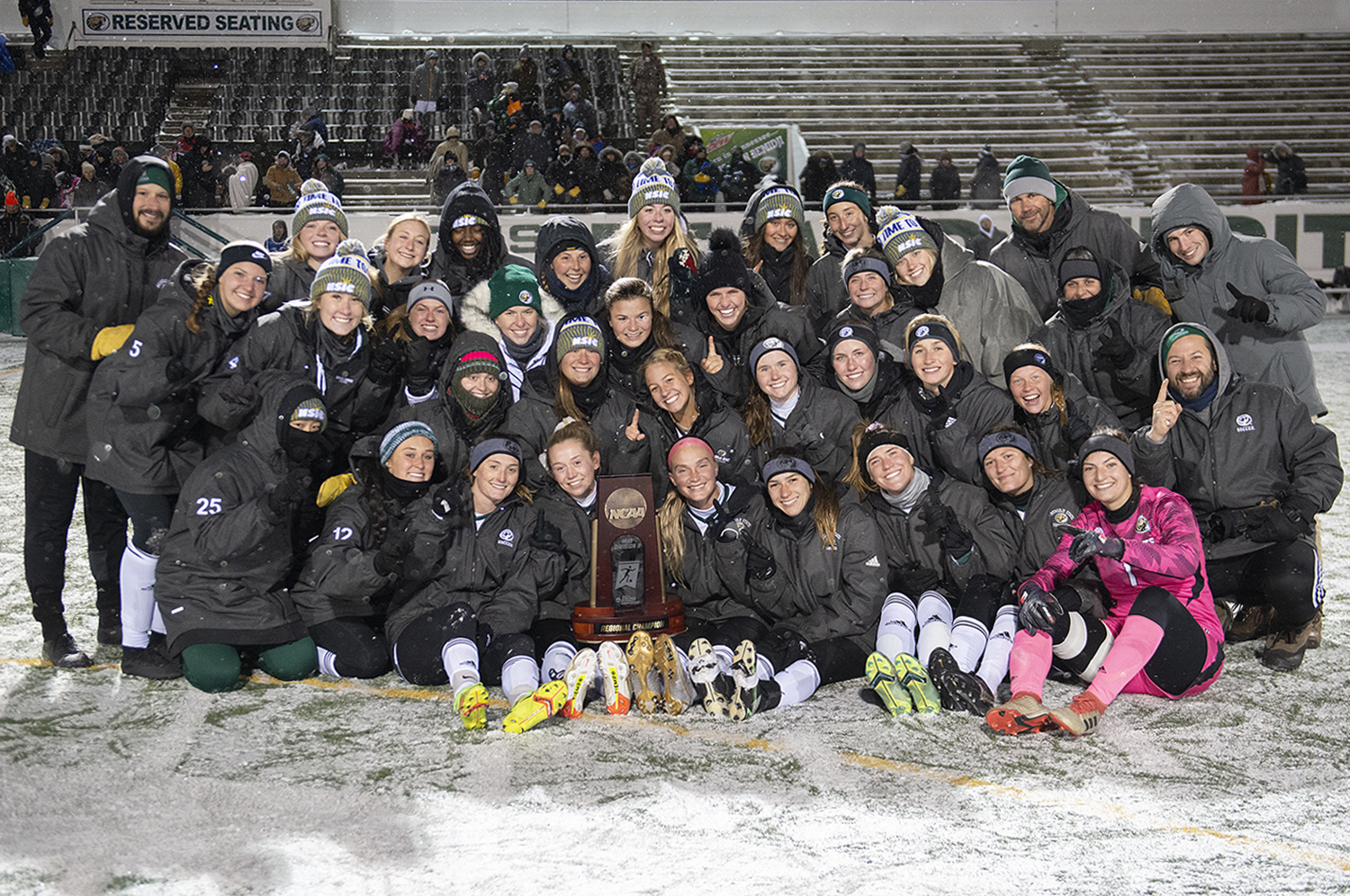
Two historic seasons collided and created an unprecedented weekend of sports at Chet Anderson Stadium. The football and women's soccer team hosted groundbreaking NCAA Tournament regionals on back-to-back-to-back days in what was dubbed the "mega-weekend." The BSU football team defeated Winona State 31-7 to reach the Sweet Sixteen, while soccer beat Emporia State in a shootout to win the Central Region championship before bowing out in the national quarterfinals.
Jan. 25, 2024
BSU launches History in the Pines

As a way to preserve and celebrate Bemidji State University's storied past, the Alumni & Foundation launched "History in the Pines," an interactive database of BSU history. The digital museum uniquely showcases many facets of Bemidji State's past, which is linked by over 50,000 alumni.


